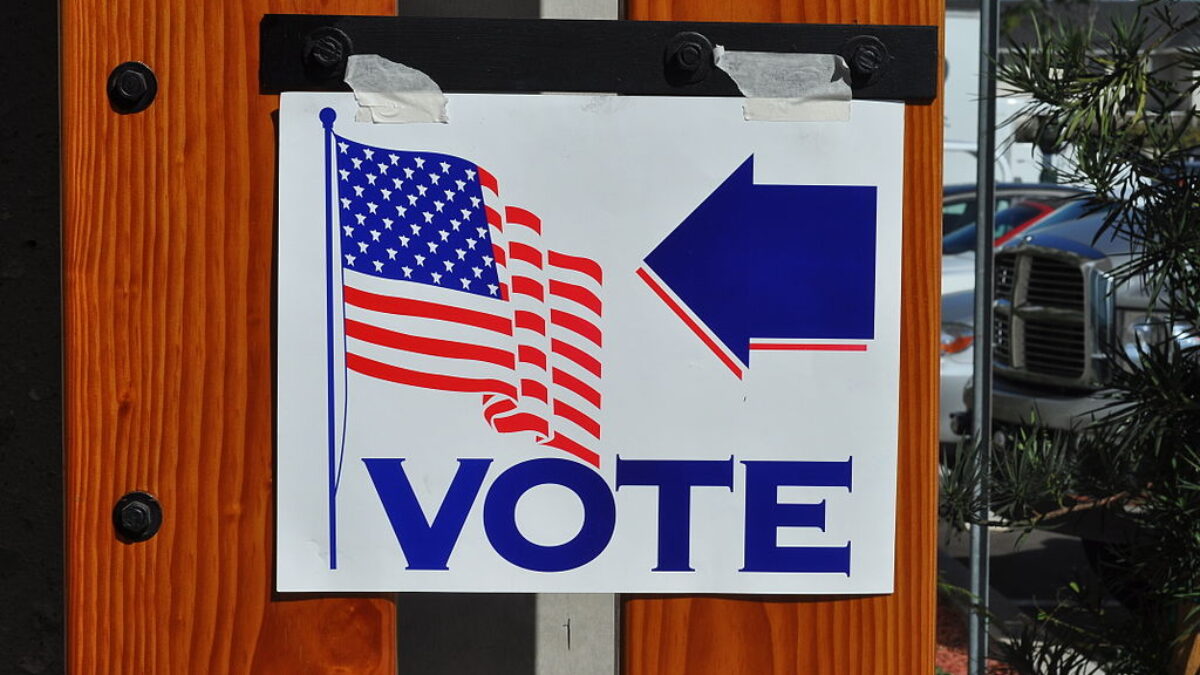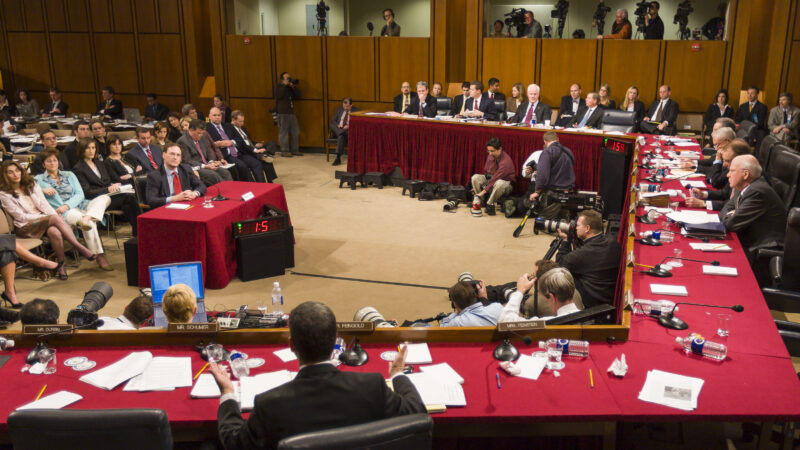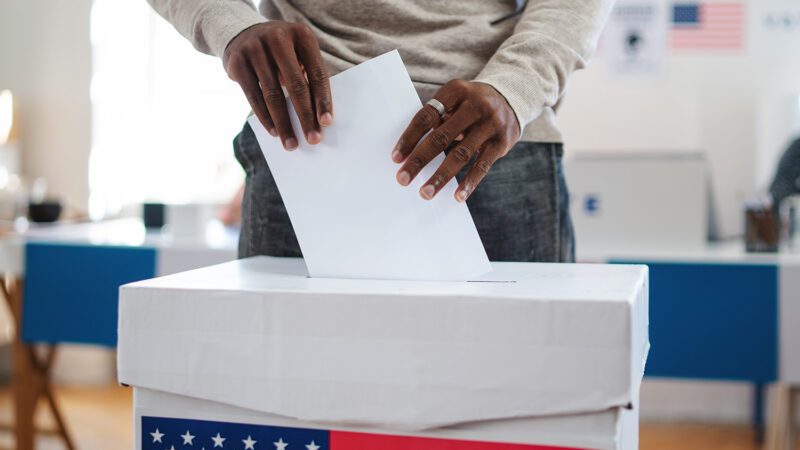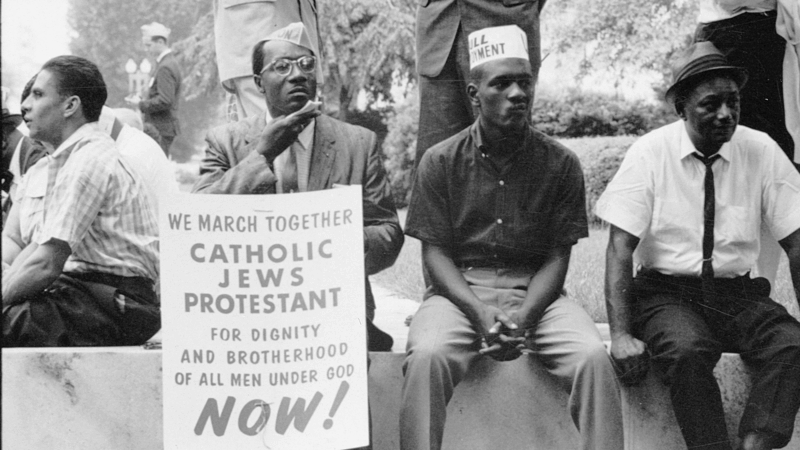Rachel Homer leads litigation and policy advocacy to support and expand voting rights and curb abuses of power.
What is election subversion?
- August 14, 2023
Inside the denialism, intimidation, and suppression threatening our democracy.

Following the January 6 insurrection and the associated disinformation campaign to undermine the 2020 election, an unprecedented wave of political activity, legislative changes, litigation, and coordinated “election integrity” activism has eroded confidence in democracy and instigated attempts to undermine free and fair elections. It has become clear that the effort to overturn the result of the 2020 election was not a one-time anomaly, but rather one piece of a sustained movement to introduce confusion and disruption into the democratic process. This is election subversion, an authoritarian tactic aimed at corrupting elections by preventing the true election winner from taking office.
Election subversion is often contrasted with voter suppression, which describes the use of laws and rules to make it harder for voters to cast ballots. But the phenomena are two sides of the same coin: successful voter suppression has the potential to change election outcomes through illegitimate means; and the same baseless allegations of election “voter fraud” can motivate both voter suppression and election subversion.
Is the risk of election subversion new?
No — but it is newly resurgent.
Efforts to undermine elections are as old as American democracy itself. But they’ve never been seen with this ferocity and at a nationwide scale. Most prominently, President Trump and his allies attempted to subvert the 2020 presidential election by pressuring state officials and members of Congress to interfere with the certification process. Since then, election subversion efforts have continued, ranging from improper legislative audits, the adoption of unreliable hand-count procedures, and outright refusals to certify election outcomes. These efforts go hand-in-hand with the dramatic increase in efforts at voter suppression in the last decade.
Efforts to hijack election outcomes are a critical component of the authoritarian playbook. Unlike their precursors, 21st-century authoritarians often maintain the facade of democratic elections, while at the same time engaging in voter suppression, election subversion, and denialism to ensure that they remain in office. We’re seeing increasing instances of this authoritarian tactic in the United States today, meaning combatting election subversion is an increasingly urgent need.
What types of subversion are happening right now?
American democracy has seen a sharp increase in several types of election subversion. These include:
1. Election denialism. Since 2020, there’s been a dramatic increase in the number of candidates for office and high profile individuals who have tried to cast doubt on the results of the presidential election, and who have tried to run the same playbook casting doubt on subsequent elections. (The 2020 election was free and fair and President Joe Biden won.) Nearly 300 election deniers ran for state or congressional office in 2022, and nearly 60% of Americans had an election denier on the ballot in the 2022 midterm election. Most election deniers who ran for state-wide offices lost their elections in 2022, but many other election denier candidates won their races for other seats.
Some election deniers hold relevant offices in states and counties and could try to subvert elections from the inside — whether by compromising the security of ballot machines, engaging in fraudulent “audits” of ballot machines, or other subversion methods.
2. Disinformation. Since the very moment the 2020 election was called for Joe Biden, there’s been a flood of disinformation undermining the outcome. These false narratives also work to call into question the results of state-level elections, and even our entire democratic system of elections. False claims of fraud in the 2020 election lay the groundwork for undermining the integrity of every single future election, allowing election deniers to assert that the only legitimate elections are those with outcomes they agree with.
For example, Dinesh D’Souza, True the Vote, and other purveyors of disinformation repeatedly falsely accusing a voter in Georgia of ballot fraud via a widely-distributed film that sought to undermine the results of the 2020 election.
Read more about our efforts to counter election disinformation Read more about our efforts to counter election disinformation
3. Intimidation. Disinformation about the 2020 election is closely tied to a recent increase in voter intimidation: false narratives about “stolen” elections often motivate and perpetuate illegal intimidation, threats of violence, and actual violence against voters and election workers. Examples of disinformation-based intimidation include attempts to surveil Arizona voters at ballot drop boxes in the 2022 midterm election and falsely accuse them of fraud, and a coordinated convoy of Trump supporters working to drive a Biden-Harris Campaign bus tour off the road in October 2020.
Increased threats and intimidation aimed at election officials present significant obstacles to the process of elections. Some of these threats are a direct attempt to prevent vote tabulation from happening after elections; other threats and intimidation have the effect of driving experienced election administrators and poll workers to quit — making our elections more vulnerable.
Read more about our efforts to counter intimidation Read more about our efforts to counter intimidation
4. Legislative subversion. Election deniers in state legislatures are proposing — and in some cases passing — legislation that increases the risk of election subversion.
Some of these legislative efforts at subversion are direct: that is, they declare that the legislature has the right to throw out election results and determine the winner themselves. The vast majority of state legislative subversion, however, is indirect: providing opportunities for the legislature to create delay, chaos, and confusion about the results; opening the door for bad actors to announce that the proper winner can’t be determined and therefore declare their preferred winner.
Read more about state legislative subversion Read more about state legislative subversion
5. Voter suppression. Voter suppression is inextricably intertwined with election subversion. Both tactics are designed to influence the outcome of an election by undemocratically changing the rules, rather than by persuading voters. In particular, efforts to disenfranchise large segments of the population to shape who wins an election straddle the line between voter suppression and election subversion.
For example, the racist history of felony disenfranchisement in our democracy doesn’t fit neatly into suppression or subversion. Convicting Black Americans of felonies at higher rates than their counterparts and then ensuring the convictions can be used to prevent them from voting is perhaps one of the oldest instances of combined voter suppression and election subversion in our democracy. In North Carolina, those with felony convictions are prevented from voting even after they’ve completed their sentences. In Virginia, the state’s felony disenfranchisement law violates a Reconstruction-era statute aimed at specifically combatting the tactic of combining suppression and subversion. Tennessee just recently changed its rules to make it harder for people convicted of felonies to regain their right to vote — drawing an unbroken line from long-ago efforts at voter suppression to efforts today.
Election subversion is a loser’s game.
The false claim that the 2020 election was stolen has provided a basis for election deniers, anti-democracy politicians, and other bad actors to justify their efforts to undermine the bedrock of our democracy — free and fair elections. Ironically, election deniers have used false narratives about the 2020 election being stolen to legitimize their own attempts at actually undermining elections. Though voters across the country are pushing back against election denialism, the threat remains. Defeating the ideology of those intent on corrupting our system of elections is among the most urgent democracy work that lies ahead.
Related Content
Current United States Authoritarian Threat Index score: 3.3/5 Severe Threat •
-
Civil Violence 2.5/5 • Significant Threat
-
Elections 2.7/5 • Significant Threat
Join Us.
Building a stronger, more resilient democracy is possible, but we can’t do it alone. Become part of the fight today.
Donate
Sign Up for Updates Sign Up for Updates
Explore Careers Explore Careers
How to Protect Democracy How to Protect Democracy




